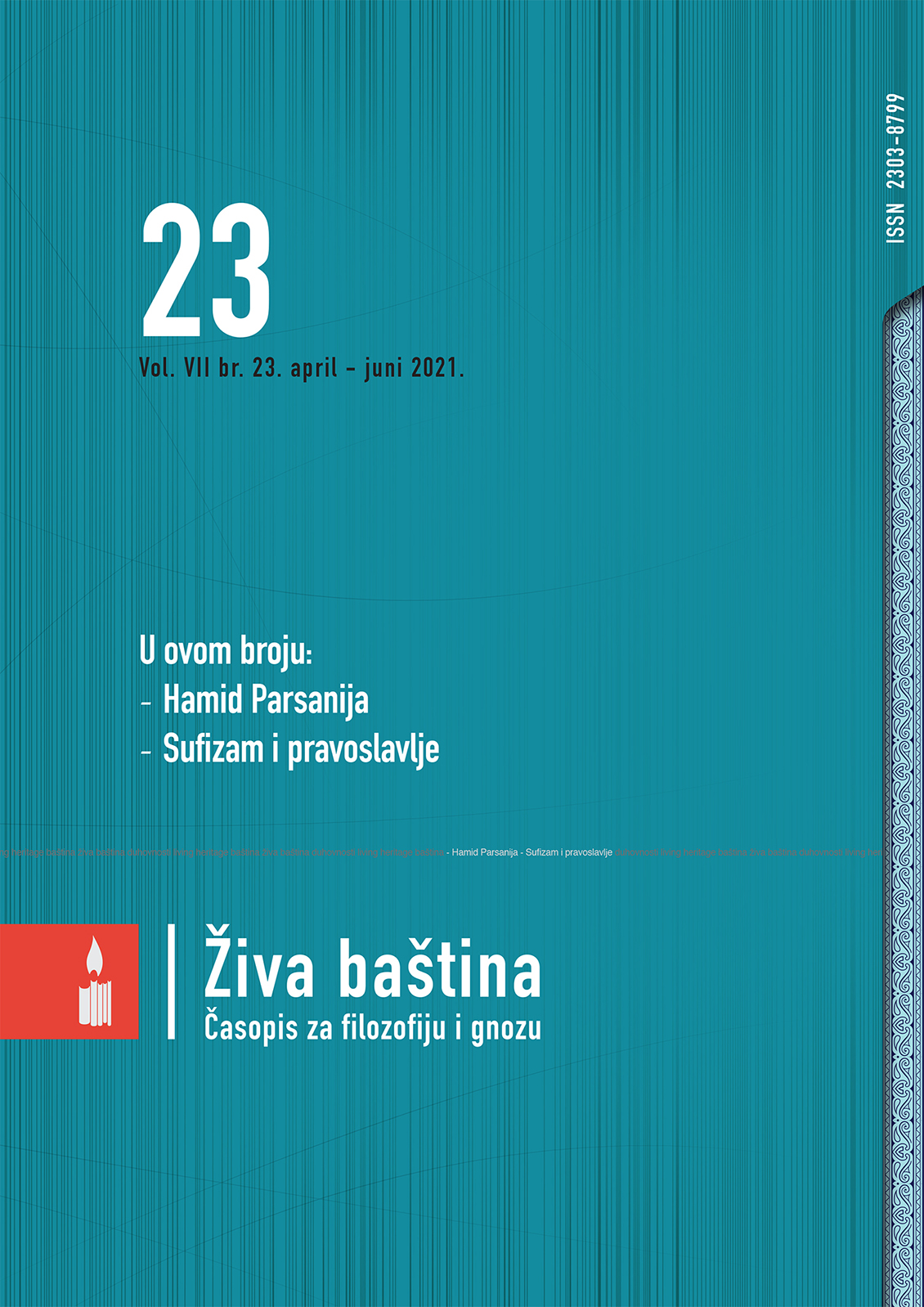UDK 111.852:82.0-1
Od Baumgartenovog nastojanja zasnivanja estetike, čemu je prethodilo uvođenje pojma estetike kao nāuka o spoznaji osjetilnog – uzimajući takvo određenje i bez ulaženja u raspravu o kakvoći takvog određenja, možemo kazati da estetika kao takva nije u mnogomu napredovala glede propitivanja sopstvenog pojma, sadržaja toga pojma kao i sveukupnosti fenomena koje estetika određena takvim pojmom obujmljuje, metodologije proučavanja fenomena pripadnih estetici kao takvoj, kao niti nastojanja samoizgradnje k jednom sigurnom putu znanosti, uopće. I ono što je u srednjovjekovlju bila metafizika, koja se prema Kantovim riječima objavila kao poligon pogodan za svakojake igrarije i kojom se bavio ko god je želio, možemo zamijetiti da je u suvremenosti estetika. Spoznaja osjetilnog se tako daje kao neograđen prostor koji srazložno k tomu nikada nije dopustio estetici da uspostavi jedan konačan sud koji će biti suveren presuditi da li nešto jeste estetsko ili nije uslijed čega je estetika primorana računati o predmetima estetike na takav način da nikada ne daje krajnje sudove. Hipoteza kao sud za koji se pretpostavlja da je istinit kako bi se njime objasnile određene činjenice ili kao pretpostavka na temelju činjenica ogleda se u zastupanju ideje o aporičnosti estetike što se ima eksplicirati kroz primjer pjevanja od novovjekovlja do suvremenosti jednom vremenskom interpretacijom iz Sada. Dakle, u ovomu radu ima se za prikazati na primjeru pjevanja od novovjekovlja do suvremenosti objavljivanje tako očite aporičnosti na koju je estetika pristala u svojemu začetku i od koje se nije u mnogomu odvojila u suvremenosti.
Ključne riječi: estetika, aporije, pjevanje, pjesma, novovjekovlje, suvremenost.
Aporia’s of Aesthetics: Chanting from Modern age to the Contemporary Time
From Baumgarten's attempt to establish aesthetics preceded by the introduction of the notion of aesthetics as the science of sensory knowledge, taking such a definition and without coming into the discussion of the quality of such a definition, we can say that aesthetics has not advanced much in reconsidering its notion, the content of the notion, or the overall phenomena subsumed by aesthetics defined by that notion, the methodology of studying the aesthetic phenomena, and attempts to build oneself towards a safe path of science in general.
What was metaphysics in the Middle Ages, to refer to Kant’s words: a polygon suitable for every kind of play and open to anyone who wanted to deal with it, that is aesthetics today. The sensory knowledge is an unbuckled space that, according to that, has never allowed aesthetics to establish a final judgement to be a sovereign in determining whether something is aesthetics or not and why aesthetics is forced to count on aesthetic objects in such a way that it never gave the ultimate judgement. Hypothesis, as a judgement presumed to be true in order to explain certain facts, or as assumed on the basis of facts, is reflected in the aporias of aesthetics through an example of singing from the Modern Age to the Contemporary period with a time interpretation of Now. We will see in the example of singing, from the Modern Age to the Contemporary period, the publication of such an apparent aporeticness to which aesthetics agreed at its beginning and which did not differ greatly from leaving it open for the judgements about what is and what is not aesthetics.
Key words: aesthetic, chanting, song, Modern Age, Contemporary.
[tags]

